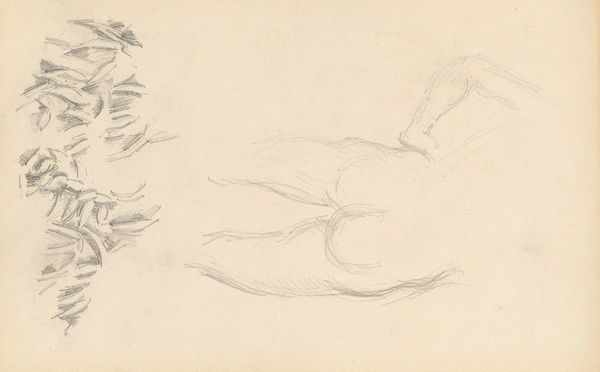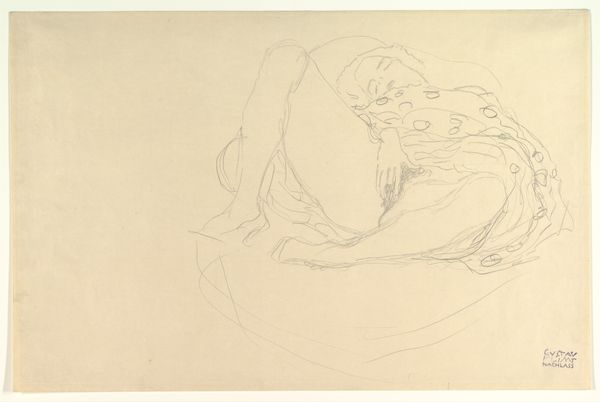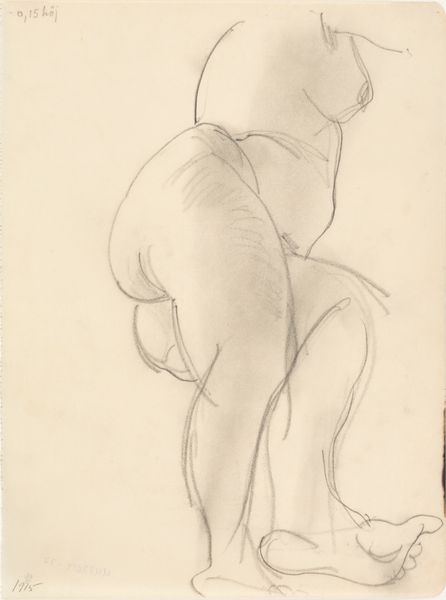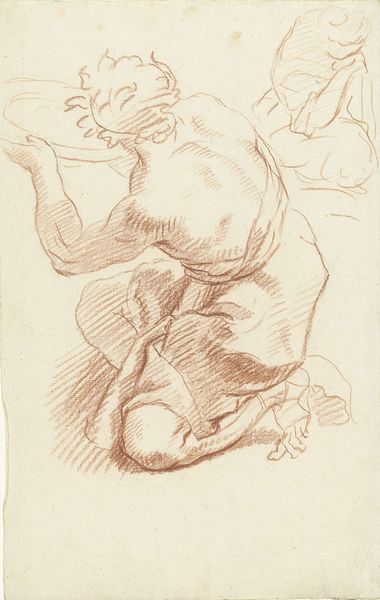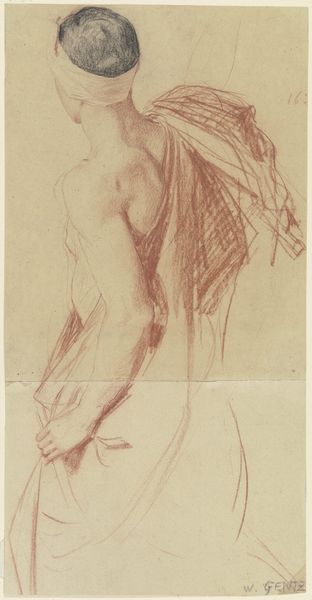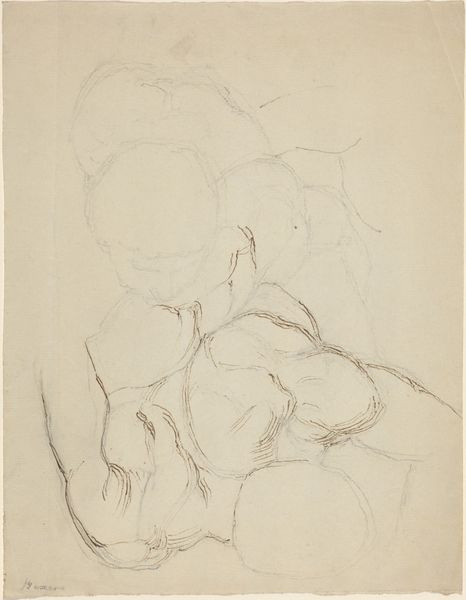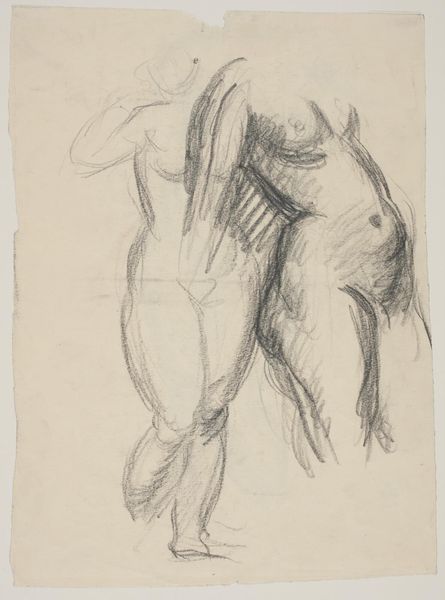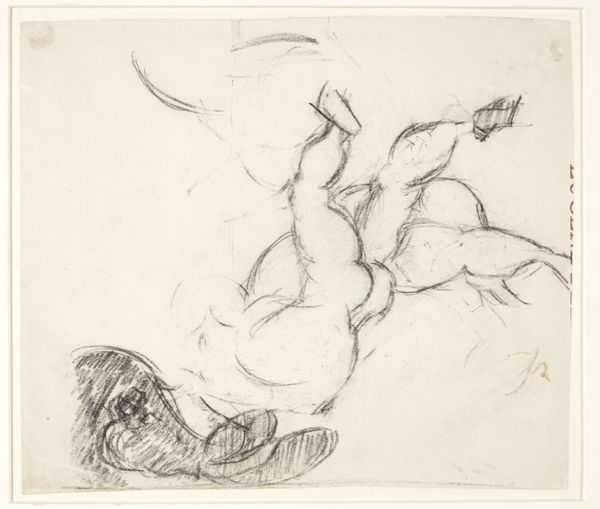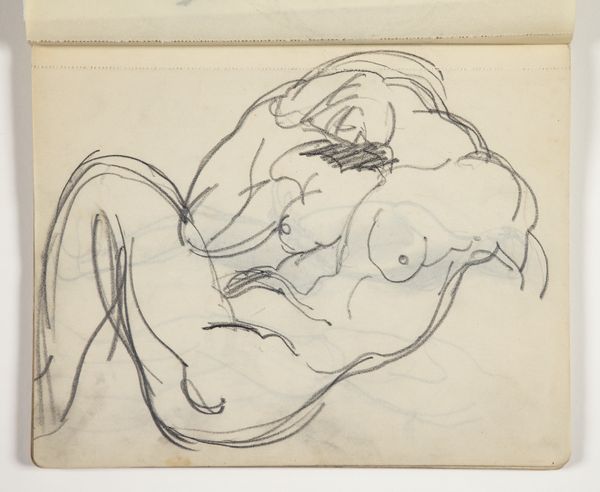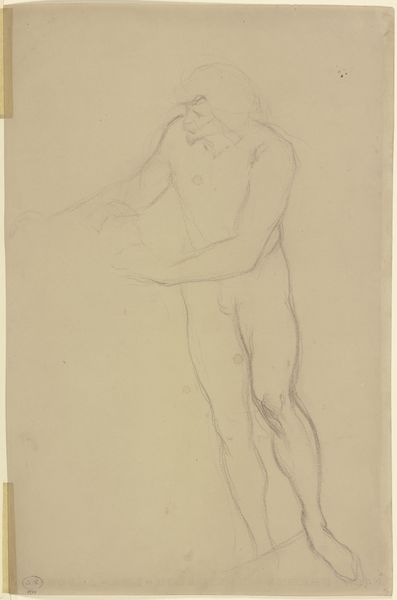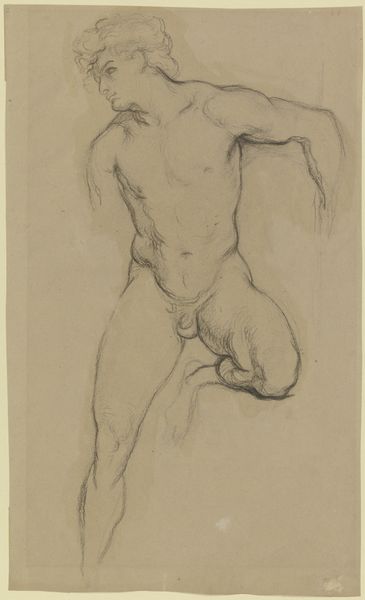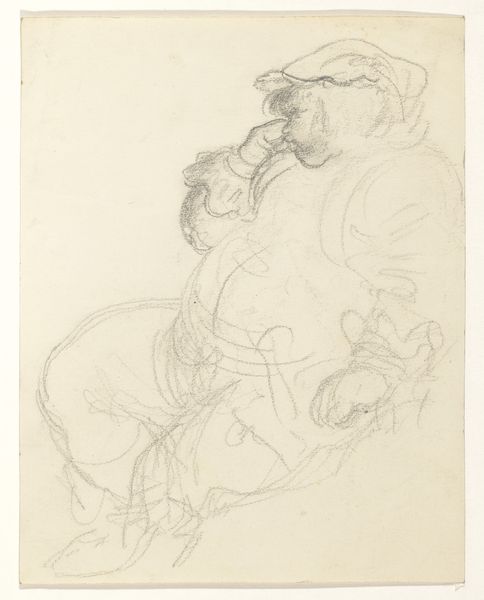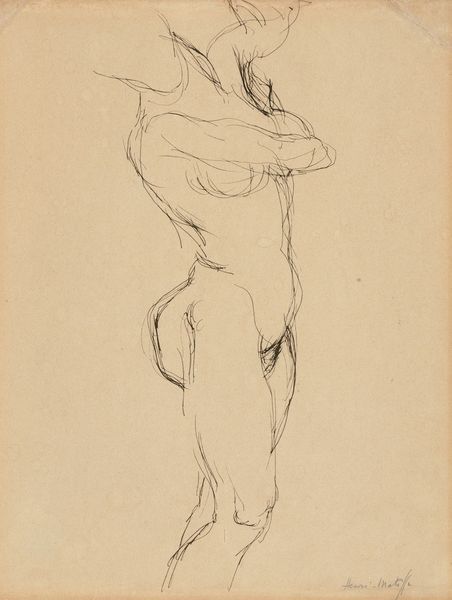
drawing, pencil
#
portrait
#
drawing
#
vienna-secession
#
figuration
#
pencil
#
symbolism
Dimensions: Sheet: 21 1/2 × 13 7/8 in. (54.6 × 35.2 cm) Frame: 29 × 23 × 1 1/2 in. (73.7 × 58.4 × 3.8 cm)
Copyright: Public Domain
Editor: This is Gustav Klimt’s “Two Studies for a Crouching Woman,” created around 1914-1915. It's a pencil drawing, and the two figures, one above the other, seem almost melancholic or perhaps contemplative. What do you see in this piece beyond its immediate aesthetic qualities? Curator: The positioning of these women is incredibly potent when contextualized with Vienna’s social climate during the early 20th century. Klimt was working amidst burgeoning feminist movements, but also within very rigid social structures that limited women’s autonomy. Editor: So, their pose... is it a reflection of something? Curator: Exactly! The "crouching" posture can be read as both vulnerable and self-protective. It embodies the societal pressures women faced: the expectation of demureness versus the burgeoning desire for self-determination. Look at how the lines are almost hesitant, unfinished – does that suggest anything to you? Editor: Perhaps it's capturing a moment of in-between, a transitional period? The loose lines kind of blur the women, they lack solidity... Curator: Precisely! Their ambiguous, almost spectral presence speaks volumes. And think about the Symbolist movement influence here. Klimt uses the figure as a vehicle for conveying deeper psychological and societal undercurrents. These women aren’t just portraits; they are embodiments of a complex struggle for identity. Editor: This makes me look at Klimt differently. It’s easy to get lost in the decorative aspects of his paintings and miss these subtle comments. I am starting to see that Klimt was part of a conversation much broader than what initially meets the eye. Curator: Absolutely, and that conversation continues. Considering the piece today, how does the representation of the female form resonate with contemporary discussions about gender and power? That is where the real learning happens.
Comments
No comments
Be the first to comment and join the conversation on the ultimate creative platform.

